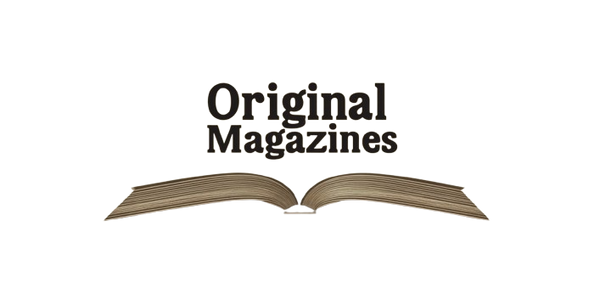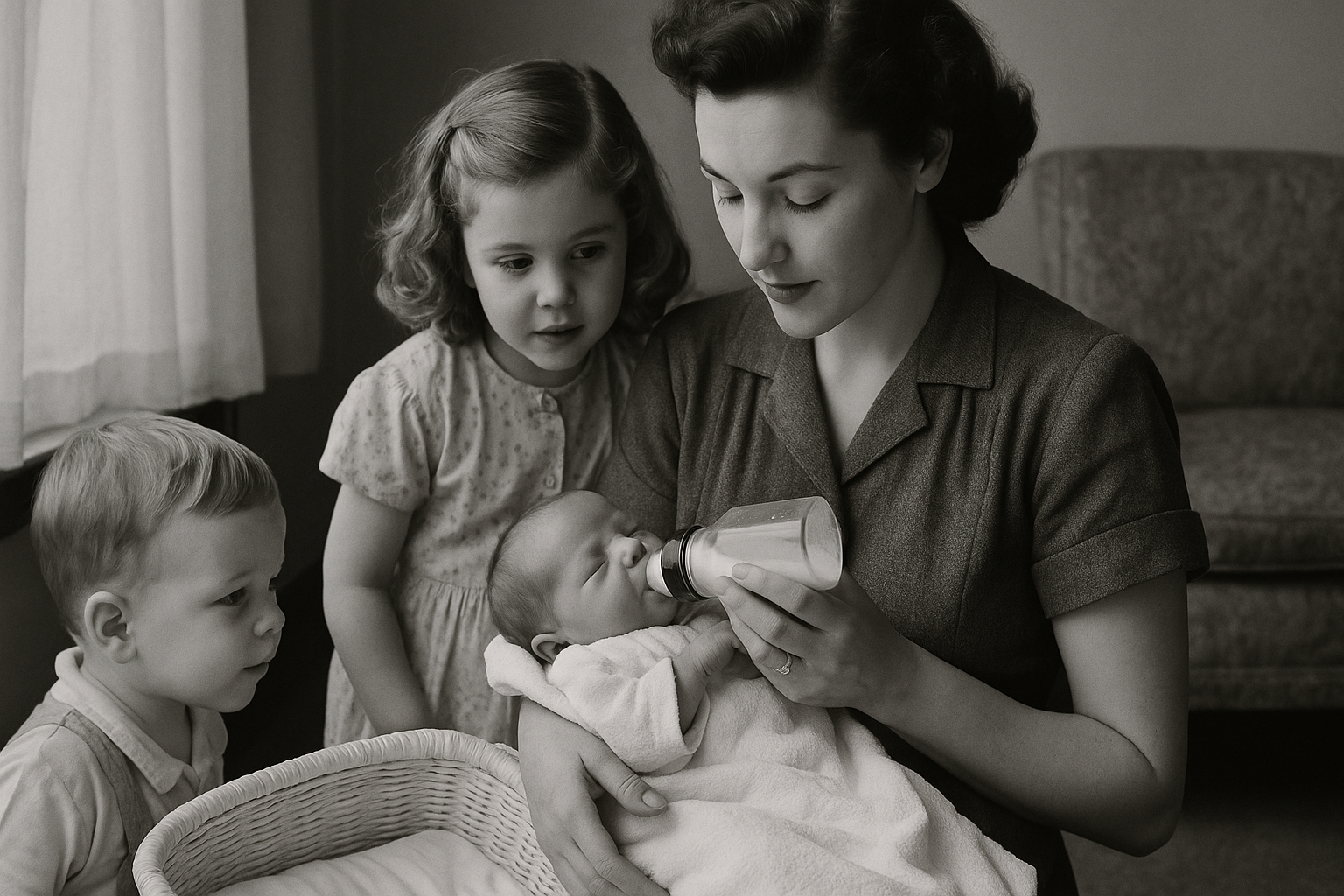First Cries, Family Bonds, and the New Science of Parenthood in 1950 America
When American mothers and fathers opened the March 1950 issue of Ladies’ Home Journal, they weren’t simply turning pages of a household magazine. They were stepping into a national conversation about childbirth, parenthood, and the future of family life in postwar America. This particular issue introduced the beginning of a year-long photo-essay, “Baby’s First Year,” a striking collaboration between writer and editors, and photographer Wayne Miller, who documented the growth of his own daughter, Dana.
For readers, this was more than an article. It was a blueprint of parenthood in a world adjusting to modern medicine, suburban living, and the shifting roles of women after World War II. Just as Life Magazine had brought war into American homes, Ladies’ Home Journal brought the intimate story of motherhood and infancy into millions of households.
The year 1950 was a turning point in American domestic life. The postwar baby boom was in full swing, with millions of young families expanding. Advances in medicine—hospital births, new prenatal care, and postnatal guidance—were reshaping expectations of childbirth and infant care. Yet at the same time, mothers were still expected to balance modern science with traditional maternal wisdom.
The Ladies’ Home Journal was at the forefront of this shift. By launching “Baby’s First Year,” the magazine combined photography, medical knowledge, and storytelling to walk parents step by step through a child’s development. Each month would feature milestones, challenges, and joys of Dana Miller’s life—presented in a way that spoke to both the heart and the head.
This was parenting journalism as cultural history: it reflected the anxieties, hopes, and values of postwar families. While fathers were often shown as providers, mothers were cast as the scientific yet emotional guardians of early childhood.
Much like Life Magazine’s war coverage, Ladies’ Home Journal used photography as proof and guidance. The opening spread of “Baby’s First Year” showed Dana’s birth in a Chicago hospital—her first cries, the medical team attending to her, and her mother Joan in recovery. These were not posed glamour shots. They were documentary-style images capturing both the fragility and triumph of childbirth.
The article reassured readers with medical facts:
-
280 days from conception to birth.
-
85% of American babies born in hospitals, with average costs of $250–$350.
-
Average newborn weight: 8 pounds, 18–21 inches long.
At the same time, it gave parents emotional touchpoints: the bond of breastfeeding, the importance of gentle handling, and the rhythms of early feeding and sleep.
For many readers, this wasn’t abstract. It was the closest they had to seeing another family’s intimate journey, making the piece both practical advice and cultural mirror.
The visual power of the article lay in its contrast of scenes:
-
A stark photo of Dana’s first breath in the delivery room, flanked by masked doctors.
-
Close-ups of her tiny fists and first cry, described as “establishing breathing and inflating lungs.”
-
A tender portrait of Joan Miller cradling Dana by the window, capturing the soft domestic ideal the Journal so often promoted.
-
Sibling admiration—Jeanette, age 3, and David, 18 months, peering into Dana’s crib, symbolizing the growing baby boom family.
Unlike fashion spreads or fictional stories, this photo-essay was life itself—scientific, emotional, and aspirational. Readers could see themselves reflected in these images, making the Journal not just a magazine, but a guidebook for modern family life.
-
The First Cry – Establishes breathing, inflates lungs, and signals life outside the womb.
-
Hospital Births on the Rise – 85% of babies born in hospitals; costs carefully documented for young families.
-
Immature but Full-Term – Dana spent three days in an incubator due to her small size and poor eyesight, highlighting advances in neonatal care.
-
Breastfeeding Advocacy – The article praised breast milk as the ideal food: always sterile, always the right temperature.
-
Sibling Bonds – Photographs showed the role of older children in welcoming and observing the newborn.
-
Early Ambulation for Mothers – Doctors encouraged mothers to be out of bed by the third day to regain circulation.
-
Feeding Rhythms – Parents were advised to feed on demand but gently encourage routine—reflecting new child psychology approaches.
-
Photographic Record – Wayne Miller’s intimate documentation gave the series both credibility and relatability.
-
Cultural Ideal of Motherhood – Joan Miller’s calm, domestic image symbolized the Journal’s vision of postwar womanhood.
-
Promise of Continuity – The article set the stage for 12 monthly installments, ensuring readers would follow Dana’s journey like a serialized novel.
For collectors of vintage Ladies’ Home Journal magazines, the March 1950 issue is more than old paper. It is an artifact of parenting history.
-
Historical Timing – It marked the launch of one of the Journal’s most famous series, capturing babyhood month by month.
-
Cultural Significance – It reflected the postwar baby boom, hospital medicine, and the gender roles of the era.
-
Photographic Legacy – Wayne Miller’s images remain powerful examples of documentary photography in service of everyday family life.
-
Collector Demand – Issues tied to milestone series like “Baby’s First Year” are especially valued, not only by collectors but also by families preserving their heritage.
Holding this issue is holding a time capsule of mid-century American family life.
These issues endure because they were more than advice columns. They were emotional companions to millions of parents navigating the uncertainties of early childhood. Every page carried reassurance, a blend of medical fact and maternal warmth.
In today’s digital world, where parenting blogs and online communities abound, vintage issues of Ladies’ Home Journal remind us that the search for guidance, solidarity, and proof of “doing it right” is nothing new. These magazines slow down time, showing how one baby’s journey was once read, studied, and even saved in scrapbooks across the country.
If you’re fascinated by this issue—or want to explore others like it—our archive has decades of original Ladies’ Home Journal magazines, spanning women’s suffrage, postwar domestic life, fashion revolutions, and the rise of feminism.
👉 Browse the full collection here:
Original Ladies’ Home Journal Collection
Whether you’re a seasoned collector, a historian, or simply someone honoring your family’s past, these magazines offer something truly rare: a living record of American life, as it unfolded month by month.
The March 1950 issue of Ladies’ Home Journal remains a landmark in the history of women’s magazines. By chronicling Dana Miller’s first year of life, it gave readers a mix of science, sentiment, and visual storytelling that reflected the hopes and realities of the postwar baby boom.
To hold this issue today is to hold a story of birth, motherhood, and cultural change—one that still resonates seventy years later. For anyone who values history, Ladies’ Home Journal is not simply reading material. It is an artifact of women’s history, family life, and American culture.

